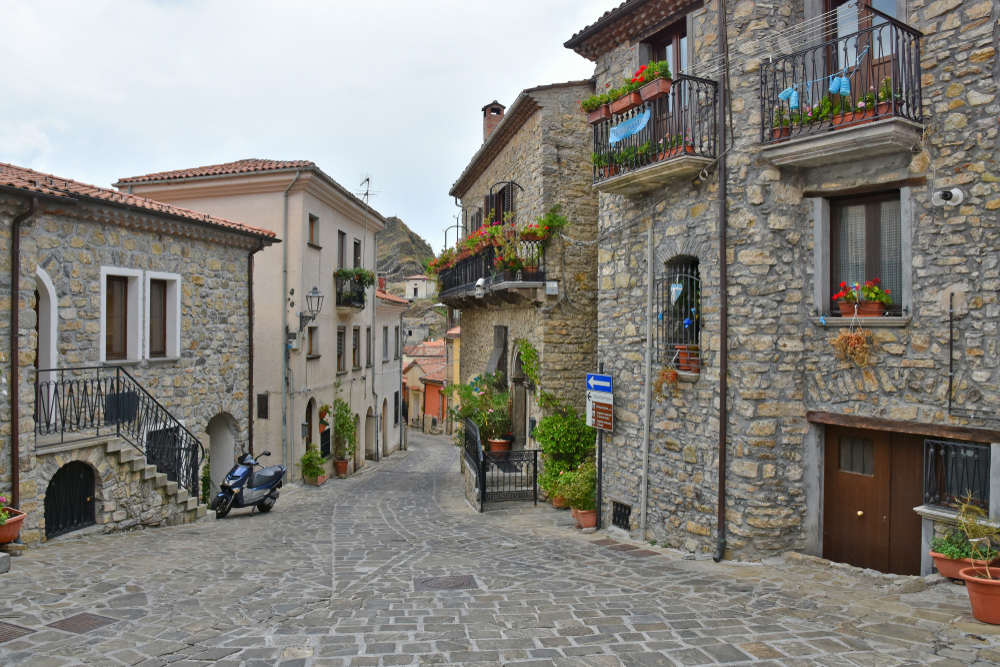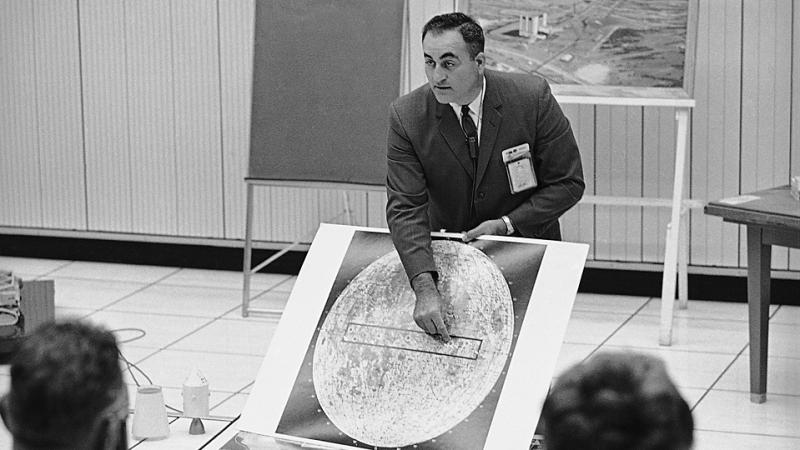Ed., Oct. 5, 2024: This article was originally published in 2019 to coincide with the 50th anniversary of the moon landing. We are revisiting it now in celebration of Italian-American Heritage Month.
Rocco Petrone was a man who began with nothing, but who always shot for the moon. And one day he got it.
Petrone, whose family hailed from Sasso di Castalda, a village of just 1,000 people perched on the Apennines near Potenza, was the director of Apollo 11, the NASA mission that landed humans on the moon.
Petrone’s parents, Teresa and Antonio, left Italy after World War I. Like so many Italians before and after them, they were in search of better living conditions, and thought they could find them in the United States. They settled in Amsterdam, in the state of New York, a small town by American standards — but living alongside 30,000 other residents was likely a huge change, given the family background.
Petrone was born in Amsterdam on March 31, 1926, and named after the patron saint of Sasso di Castalda — San Rocco or Saint Roch in English. His middle name was Anthony, after his father, who he never really knew; Antonio died in an accident at the railway yard where he’d found work when Rocco was just six months old. Teresa, who worked in a glove factory, was 27 years old, and was left with three children to support.
But she was resilient, and passed her strength onto her children. The young Petrone was one of the best students of his high school, all while holding down an afternoon job selling ice to make a few bucks.
Petrone won an appointment to the U.S. Military Academy at West Point, where he quickly distinguished himself academically, particularly in math and new technologies. He was also gifted physically: At 1.90m (6.2 ft) for 100 kilos (220 lbs), he was a good football player and played tackle on a national championship football team.
After graduating from West Point, and a stint in Germany right after World War II (during which time he also traveled to Sasso di Castalda to meet his grandmother and other relatives), Petrone returned to the United States and got accepted to the prestigious Massachusetts Institute of Technology (MIT). There, he received a master’s degree in mechanical engineering and became interested in the development and testing of rockets and ballistic missiles.
The road to NASA

Working for the U.S. Army for two decades, Petrone helped develop the Redstone rocket, the first large U.S. ballistic missile and the vehicle used to launch the United States’ first astronauts, Alan Shepard and Gus Grissom, on their suborbital missions.
By the age of 30, Petrone was one of the leading experts in the expanding field of ballistic missiles, in a world struggling to square its nuclear fear with its space race obsession.
That’s how, in 1960, he ended up at the National Aeronautics and Space Administration (NASA) in 1960, at the behest of Wernher von Braun, a pioneer of rocket technology and space science. Petrone and von Braun had met years earlier when both were working in Alabama.
At NASA, Petrone was tasked with designing and constructing the launch pads for the entire space program and he went all in. Day or night, rain or shine, he was never intimidated by the immensity of the job ahead (or if he was, he never showed it). This earned him the nickname “Tiger;” he was a boss who always expected the best possible performance from each of his collaborators, but demanded it first and foremost from himself.
Petrone oversaw the construction and development of the Saturn launch rockets, which were instrumental to the Apollo lunar mission, until 1964, when he became the director of the Apollo program.
It was during that time that Petrone developed the habit of compiling extremely detailed checklists. All team members were required to go through them countless times before giving the green light for anything, and they had to sign their own names on the dotted line to take accountability for individual decisions. Petrone’s obsession with quality control was later exacerbated by the 1967 capsule fire which he witnessed, when three astronauts died.
The gift of gab

Petrone wasn’t just a gifted engineer; he was a born communicator. He often won arguments, and was able to convince politicians to assign further funding when needed. A Washington Post obituary for Petrone recalls the following episode: “When he asked for fresh batteries for Apollo 11 during launch testing, few others felt this expensive request was worthwhile. But Kennedy Space Center Director Kurt Debus got this reply from Washington: ‘If Petrone says he wants it that way, then do it that way.’”
But Petrone was as human as anyone. On that fateful morning of July 16, 1969, he was on edge. He woke up to a crescent moon, a good omen. Liftoff was at 9.32am, as scheduled, and Petrone led the countdown without a hitch.
Coming full circle

There were human goals at the core of Petrone’s work, not just a race to the finish line. He once said that space “offers the world a chance for peace [...] If people envisioned the world without the frontiers created by man, we’d learn to live better, and more united.”
The moon may have been in his destiny. Interviewed by We the Italians, Italian journalist Renato Cantore, author of the book Dalla Terra alla Luna, says of Rocco’s ancestral hometown in Basilicata: “Sasso di Castalda...reaches almost 1,000 meters high, and in cloudless nights from there you can see the moon like nowhere else in Basilicata. It is an area extraordinarily free of light pollution and therefore the observation of the sky in this place is particularly impressive.”
Petrone died in 2006 in Palos Verdes Estates, California at the age of 80.
Italian speakers may like to check out this short RAI documentary about Petrone.







